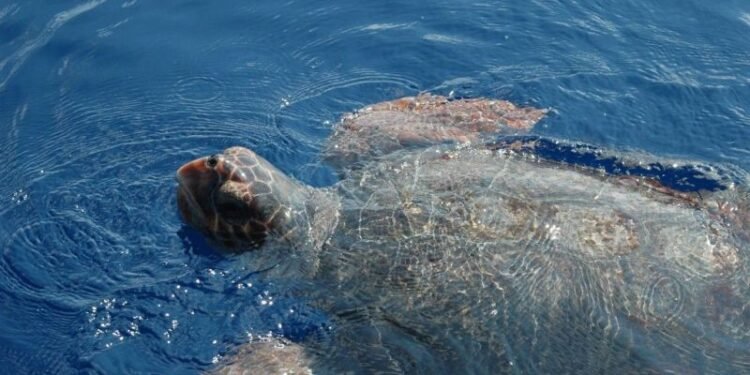Italy (Brussels Morning) “No bonfires. No motor vehicles on the beach. Coastal cleaning days. Ordinances to limit nighttime light and noise emissions. These are some of the measures that the Municipality of Messina has committed to adopting by signing the memorandum of understanding “Life Turtlenest, Turtle-Friendly Municipalities,” proposed by the Legambiente National Association Aps – Ets Associative Network to protect marine turtles, specifically the Caretta caretta species, and safeguard coastal habitats.
The initiative started last year and involves the Mediterranean portion of Italy, France, and Spain, totaling 8,000 km of coastline. Financed by the European Commission through the LIFE program, it arises from the need to adequately protect the new nesting areas of the Caretta caretta turtle species, which (due to rising sea temperatures caused by climate change) have begun laying their eggs along the coasts of the western Mediterranean.
Messina, therefore, agrees to protect marine turtles, aware that “besides representing an extraordinary value for biodiversity, they are particularly important from a socio-economic point of view within a territorial development strategy that combines the needs of natural resource protection with the realization of sustainable economic activities and respect for environmental balances,” and for this reason will contribute to the conservation of the turtle “committing to respect the indications provided by Legambiente within the Life Turtlenest project for responsible beach management potential nesting areas for these animals.”
In return, Legambiente promises to enhance and support the actions of the municipal administration and beach operators, assigning the Municipality the recognition of “Turtle-Friendly Municipality” and giving it adequate visibility through the press, social media, and other communication channels of the Life Turtlenest project. Furthermore, the association will publicize beach resorts that adhere to the “Turtle-Friendly Beaches” initiative carried out as part of the Life Turtlenest project and will carry out, in collaboration with the project’s territorial representatives, scientific, cultural, and educational activities related to the protection of marine turtles and marine biodiversity in general.
But what does the memorandum of understanding specifically entail? And what did the Municipality of Messina commit to by signing it? First of all, it must “guarantee compliance with current legislation protecting the sea and coastal environments, such as the prohibition of parking and transit of motor vehicles on beaches, lighting fires or bonfires, and abandoning waste, which also represents a serious threat to dune vegetation and a danger for turtle nesting/hatching,” as well as “promote manual cleaning of beaches, thus protecting dune vegetation and all potential nesting sites.”
The Municipality, therefore, must “avoid earthmoving and leveling interventions on dunes that may alter their outline and undermine the integrity of the coastal environment; discourage waste abandonment on beaches through the adequate placement of ecological islands; encourage civic involvement and participation of citizens by organizing spring cleaning days on the coast and informing them about the simple precautions to leave the beaches cleaner than when they arrived; limit through specific ordinances light and noise emissions during nighttime; collaborate with the territorial representatives of the Life Turtlenest Project for the protection of turtle nesting sites identified along its coast.”
And finally, “inform and sensitize beach operators about the value and benefits of adopting appropriate measures for conscious beach management.” In particular, on this point, the Municipality must raise awareness about the placement of sunbeds or umbrellas to “equip the beach with fixed umbrella holders that can be left in place and used for the entire breeding season to avoid accidental damage to the nest. Minimize the clutter of mobile equipment such as deck chairs, sun loungers, or equivalents by stacking them with the shorter side facing the sea, preferably in specific storage points properly positioned at the top of the beach”; as well as on the presence of other obstacles and “placing sports equipment (canoes, SUP, surfboards, etc.) and other objects in designated spaces identified in advance and properly positioned to prevent them from becoming obstacles to the ascent of marine turtles”; and on reducing direct or visible artificial nighttime lighting from the beach.”
You can read the original article here




